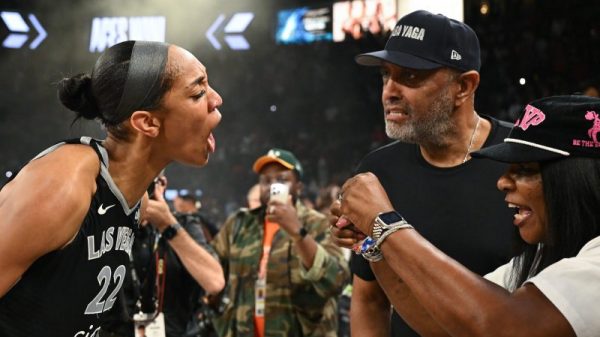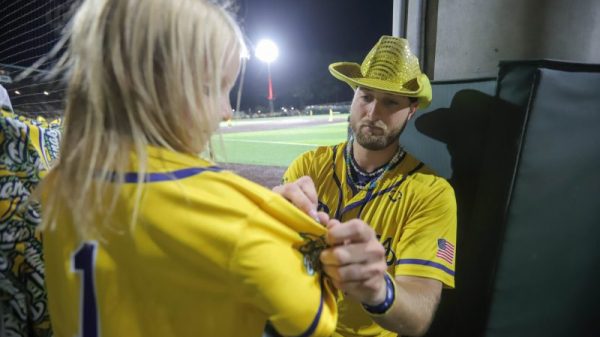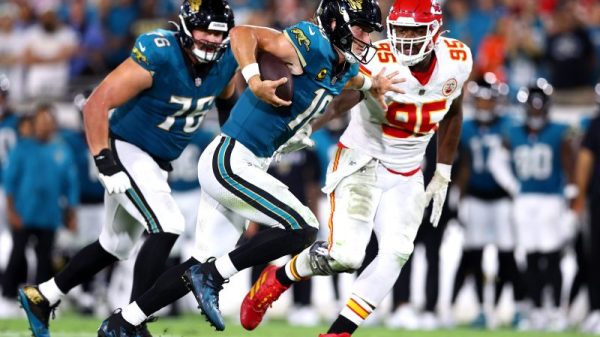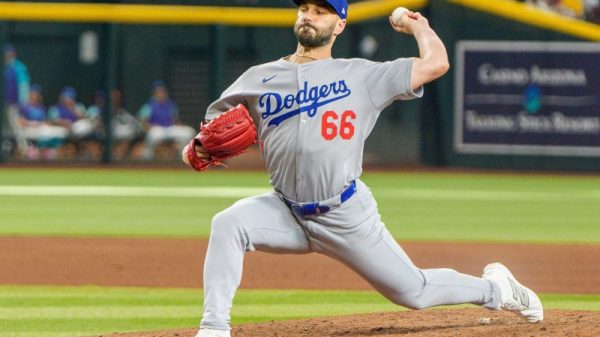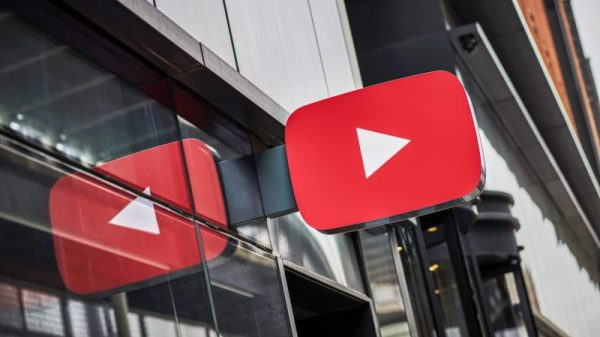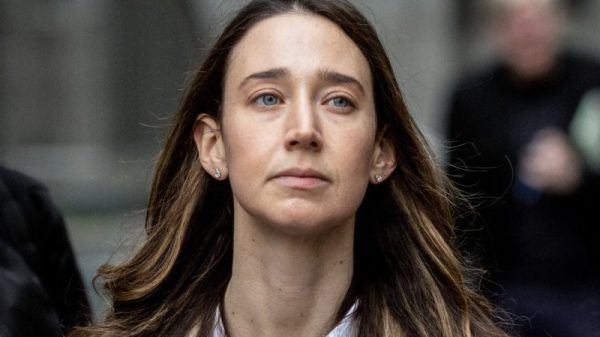In February for Black History Month, USA TODAY Sports is publishing the series “28 Black Stories in 28 Days.” We examine the issues, challenges and opportunities Black athletes and sports officials continue to face after the nation’s reckoning on race following the murder of George Floyd in 2020. This is the third installment of the series.
Johnny Bright stood in a packed arena the night before that horrendous game, the football game where an attacker would come at him for no reason, far from the ball, and elbow his face with a force that shattered his jaw.
He stood Oct. 19, 1951, smiling and waving, at what had been dubbed ‘Johnny Bright Night.’ The mayor of Des Moines and the governor of Iowa had put together the evening to celebrate the Drake University senior quarterback and halfback who was leading the country in just about every offensive stat.
Bright was considered a local celebrity in Iowa at a time when Black players were sometimes banned from teams. At a time when those allowed to play were taunted on the field with racial slurs and, off the field, turned away from diners and hotels where their white teammates were welcomed.
At Drake, Bright was a hero, expected to lead the football team to an undefeated season. He had broken the NCAA’s career rushing record the year before. And he was the frontrunner to win the Heisman Trophy, which would have made him the first Black player to earn college football’s highest honor.
Inside that basketball arena in Iowa, more than 2,000 people showed up for ‘Johnny Bright Night.’ The crowd of mostly white people rose to their feet and gave Bright, the team’s first Black captain, a standing ovation.
But as the crowd roared in Iowa, a devious plan was allegedly brewing among the football players at Oklahoma A&M, more than 500 miles away.
‘They are coming after Johnny Bright,’ said Jerald Harkness, producer and director of ‘The Bright Path: The Johnny Bright Story,’ a documentary which airs Feb. 9 on CBS Sports Network. ‘They don’t want him on their field.’
‘We weren’t being racist. We were just being brutal’
Earlier in the day, before Bright took the stage, a teammate had gone for a haircut at the local barbershop and heard the rumblings. Drake’s game the next day against Oklahoma A&M in Stillwater was going to be brutal. Bright would be the first Black player to take the Aggies’ field.
While the team had desegregated two years before, there was a group of fans, players and politicians who wanted to send a message: Black players were not welcome at Oklahoma A&M.
‘John Bright will not finish the game. There was that kind of rumor out there,’ said Bright’s teammate, Ernest Dippel, in the documentary. ‘They were definitely pointed toward taking John out.’
Oklahoma A&M had a covert reason for their attack. Not only was Bright a Black player, he was a major threat on the field. They would have to be tough, maybe brutal, to stop him.
‘You could cover a lot of racism with the brutality of the game,’ William C. Rhoden, sports journalist and author, says in ‘The Bright Path.’ ”Well, we weren’t being racist. We were just being brutal.”
But minutes into that game between Drake and Oklahoma A&M on Oct. 20, 1951, Drake players said it was clear that this was more than a football attack. And what happened to Bright in those seconds away from the ball were captured forever for the world to see.
Two photographers with the Des Moines Register had been sent to that game after rumors spread that Bright was being targeted. They would only be able to stay 15 minutes to capture what they could. They needed to fly back to Iowa to beat their newspaper’s deadlines.
’15 minutes?’ says sports historian Jaime Schultz. ‘They didn’t even need that much time.’
Oklahoma A&M needed less than 15 minutes to make infamous history and shatter Bright’s Heisman Trophy dream.
‘Picture of Prejudice’
‘The game starts and they immediately come after Johnny Bright,’ said Harkness. ‘It’s horrifying.’
On the first offensive play of the game, Bright took a snap and handed it off to fullback Gene Macomber who starts to run the ball up the field. Bright rolls away and is watching the ball when Wilbanks Smith, who is shown in photos not looking in the direction of the ball, even cutting in front of his own teammate, heads straight toward Bright.
Smith goes after Bright’s face, a forearm to the jaw. Bright is knocked down. But everyone is watching the ball, including the officials. No penalty is called.
Bright gets up and, on the next play, he throws a 61-yard touchdown pass, but he gets hit again by Smith. He wobbles to the sidelines.
On the next series, Bright is tackled by a group of Oklahoma A&M players and then punched while he’s on the ground. Newspapers reported that Bright was ‘knocked unconscious three times in the first seven minutes of play.’
‘They annihilate him,’ Harkness said. ‘They take him out of the game.’
Bright is forced to leave the field, not being touted as the next Heisman Trophy winner, but with people questioning when, and if, he would play again.
The photos captured at that game by the Des Moines Register ran in newspapers across the country with headlines such as ‘Picture of Prejudice.’ Editorial pages were filled with words universally condemning what happened to Bright.
More than 70 years later, that game in October 1951 is still remembered as the ‘Johnny Bright Incident.’
‘I never understood where this came from’
Wilbanks Smith, who died in 2020, always contended his hits on Bright had nothing to do with him being Black.
‘All my life, I never understood where this came from,’ Smith told The Oklahoman in 2006. In fact, Smith said, on the first play of the game, he delivered an identical blow to Drake’s kicker, who ‘was absolutely white.’
Smith said he had no regrets of hitting Bright, but he did regret everyone thinking the blow was racially motivated, adding that his hit, a forearm to the head, was legal in 1951.
The Oklahoman found that wasn’t the case, writing that ‘in 1932, college football instituted a rule that forbade defenders from striking opponents in the head, neck or face.’ A year after the Bright incident and because of the incident, the NCAA penalty for striking with a forearm, elbow or locked hands, or flagrantly rough play or unsportsmanlike conduct, was changed from 15 yards to mandatory suspension of the player.
Bright was always proud that he was part of making college football safer. Not only were the rules changed but the facemask Bright wore after his jaw was broken became the prototype for masks worn today.
‘While a lot of people define Johnny Bright’s career by that incident,’ Harkness said, ‘he didn’t allow it to be defined by that incident.’
Bright turned away an NFL offer for a storied career in the Canadian Football League. After that, he spent decades as a beloved educator, coach and school principal.
But three years before his death in 1983 from a heart attack at age 53, Bright didn’t mince words about what he believed happened that day in 1951 in Stillwater, Oklahoma.
‘There’s no way,’ Bright said, ‘it couldn’t have been racially motivated.’
‘He set the state on fire’
Bright was born June 11, 1930, in Fort Wayne, the second oldest of five brothers. He was raised by a single mother who was one of the first Black women to own a house in Fort Wayne.
The family of six lived in a working class neighborhood with their own property and the determination to break through any barriers that came their way.
Bright was a star in basketball, football and track at Fort Wayne Central High School. He took his basketball team twice to the state semi-finals. He won five different events in state track meets. But he loved football; that was the sport he wanted to play in college.
Bright graduated as one of the most talented athletes in the country, but had few colleges offering scholarships.
‘One of the schools in the state said, ‘We already have enough Black players on our squad,” Mike Chapman, author of ‘Triumph and Tragedy: The Inspiring Stories of Four Football Legends,’ says in the documentary. ‘I mean, what an incredible statement.’
Bright wasn’t recruited by Notre Dame, which didn’t allow Black players, and Indiana and Purdue had no interest, according to Daniel P. Finney, a Drake alum, reporter, writer and historian.
‘I think it shows our history of stupidity when it comes to underestimating and devaluing Black people,’ Finney said, ‘and Black men as a whole.’
Michigan State did offer Bright a football scholarship, so he headed to the East Lansing campus. But after a few weeks, he didn’t feel comfortable. There was racial tension.
He landed at Drake, known for being a trailblazer of equality, and was given a scholarship for basketball and track. At the time, freshman couldn’t play football. So Bright waited a year and then walked on to the team his sophomore year.
The first football game of the season, Bright didn’t get to start but, as the game played out, coach Warren Gaer decided to put Bright in and give him a chance.
‘It was probably the smartest thing that coach ever did,’ said Schultz. ‘Because by the end of the game, Bright had scored two touchdowns, passed for a third and finished the game with 250 yards of offense.’
Gaer had seen all he needed to see. He designed the team’s single wing offense around Bright and nicknamed it ‘Bright run or pass,’ because he could do both.
‘He set the state on fire with excitement,’ said Chapman. ‘And all of a sudden Johnny Bright became not only the best player in the state of Iowa but, arguably by the end of the first season, the best offensive player in the United States.’
‘Always have to watch your back’
In his junior season, Bright transformed Drake into a national contender and again broke national records, becoming the first player in college football history to run and pass for more than 1,000 yards in a single season. He led the NCAA in total offense.
‘He just had an ability that transcended everyone else,’ said teammate Dippel. And he transcended while battling prevalent racism.
‘When he was on the football field, it was a hardened way of life for him out there. He could never relax,’ said Dolph Pulliam, a Drake basketball great, in ‘The Bright Path.’ ‘You could never be comfortable, you could never enjoy the moment, you always have to watch your back and be concerned about somebody getting an illegal hit on you.’
It didn’t matter that Bright was a hero in Iowa.
‘I don’t think that a Black athlete’s celebrity insulates them from racism,’ said Gary ‘Doc’ Sailes, a sports historian. ‘He was always targeted. He had to deal with not having a safe space, but a hostile space no matter where he went.’
After the attack that took Bright out of the Heisman Trophy running, he was sidelined for two weeks and put on a liquid diet.
When he played his final college game, he threw for two touchdowns and rushed for another. But with the missed games due to the injury, it wasn’t enough. Bright finished fifth in Heisman Trophy voting.
‘Man, that is a tough way to go out,’ said Harkness, ‘especially with all the things he did.’
After the season, Drake lobbied the Missouri Valley Conference to penalize Oklahoma A&M for ‘its acts of violence.’ The conference refused and Drake left the conference in protest.
But Bright wouldn’t let any of that be the end to his dream. And he had his own statement to make.
‘Do not let your worst day define you’
Bright was drafted by the Philadelphia Eagles in the 1952 NFL draft. The Eagles had never had a Black player but the team picked Bright in the first round at No. 5, ahead of players like Frank Gifford who would go on to a legendary 12-year career with the New York Giants.
Bright knew the racial tensions of the NFL, which had banned Black players from 1933 to 1946.
‘He got drafted by the Philadelphia Eagles but he said, ‘To hell with that,” said Rhoden. ‘He said, ‘The Eagles have all these southern guys coming to the team and I’ve had it. I’ve read that book before. I’m not doing that.”
Bright turned down the NFL and instead went to the Canadian Football League, making more money than he would have in the NFL. He became the first Black player to win the league’s outstanding player award and was one of the greatest players in CFL history, winning three consecutive titles.
After retiring from football, Bright was a teacher, coach and principal, something he said before his death was his greatest accomplishment, touching all those kids’ lives.
The documentary on Bright’s life is titled ‘The Bright Path’ because ‘he led his life in a way I think we can all learn from,’ said Harkness.
‘No matter what trials and tribulations and obstacles you’re facing, do not let your worst day define you.’
Watch ‘The Bright Path: The Johnny Bright Story’ on CBS Sports Network Feb. 9.
Follow IndyStar sports reporter Dana Benbow on Twitter: @DanaBenbow. Reach her via email: dbenbow@indystar.com.







